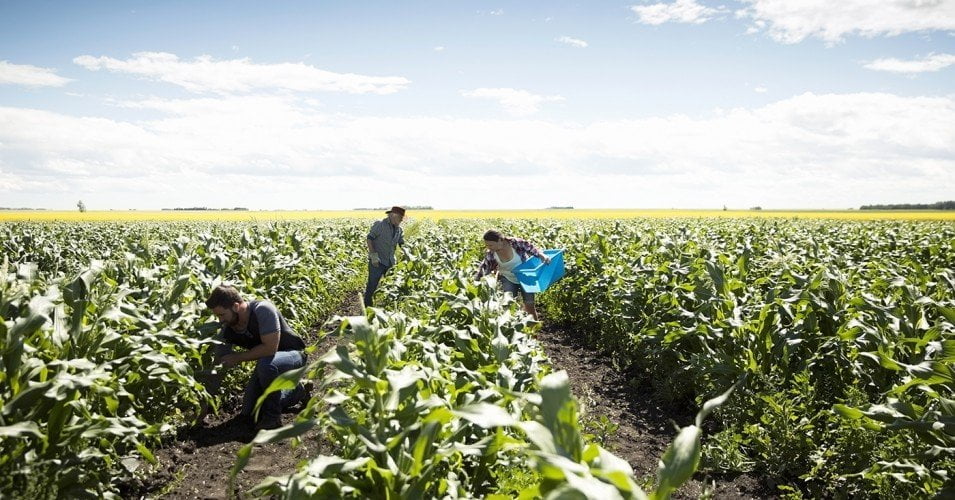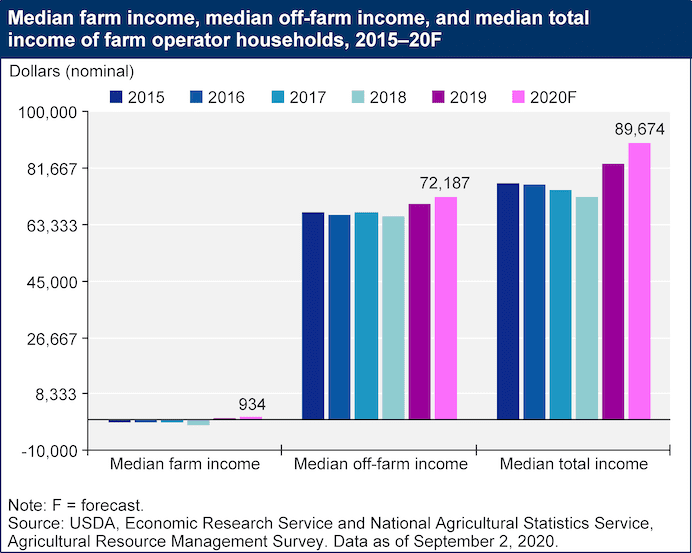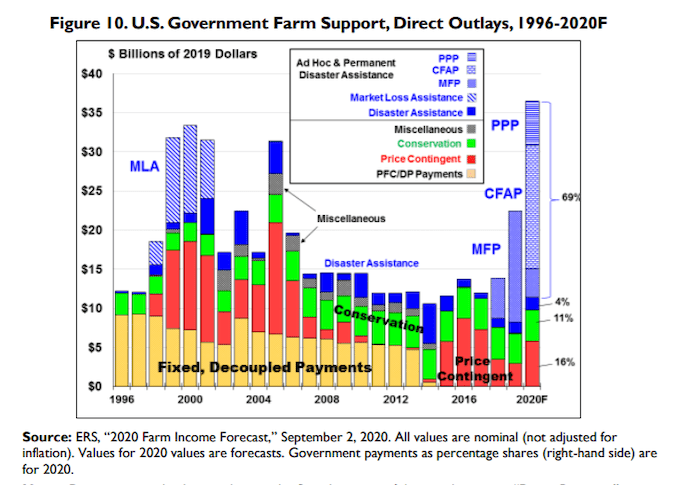From CommonDreams
After Trump’s Payouts Are Gone, What Happens to Farmers?
Here are a handful of immediate steps new leadership could take.

Close to $40 billion in agriculture-related payments this year mask structural problems in a badly broken market that doesn’t pay most farmers enough to continue farming. (Photo: Hero Images/Getty Images)
A farm economy awash in an unprecedented infusion of public dollars directed by the Trump administration could face a reckoning soon. Close to $40 billion in agriculture-related payments this year mask structural problems in a badly broken market that doesn’t pay most farmers enough to continue farming. New leadership in the White House and congressional agriculture committees should act to fix a policy framework that has greatly benefited global grain and meat companies at the expense of farmers before these ad hoc Trump payments disappear.
The massive public payments over the last three years help conceal how little farmers have made from the market. The USDA projects median farm income in 2020 will be $934, up from $296 in 2019. Median farm income has been negative from 1996 through 2018. Farm debt is forecast to rise to a record $433 billion in 2020, according to the Congressional Research Service. The farm-to-debt ratio is up 14%, the highest since 2003 after rising steadily over the last eight years. Approximately 8% of loans are in poor condition, double the rate in 2014, according to the Farm Credit Council.
It is off-farm jobs, often coming with a health care plan, that keep most farm families going. While the Trump administration’s farm-focused payments (some have said political payoffs) have helped, no one has argued they should be permanent and they are expected to to end or greatly diminish in 2021.

To put the payments in perspective, the estimated $40 billion in 2020 will be the largest government outlay to agricultural producers ever on record in both nominal and inflation-adjusted dollars, according to the CRS. Ad hoc spending (additional to existing Farm Bill programs) to the agriculture economy related to trade fights and the pandemic totaled $22.5 billion in 2018 and $33.9 billion in 2019.
The impact of these payments on farm income has been profound, making up around 36% of farm income in 2020, according to a report from the Fed in October.

SCROLL TO CONTINUE WITH CONTENT
Never Miss a Beat.
Get our best delivered to your inbox.
Not all farmers are cashing in. Most of the Trump trade payouts went to a very specific sub-set of farmers — large-scale commodity crop and livestock farmers. A recent analysis by The Counter found that almost 100% of the trade aid payments went to white farmers. Those trade aid payments have been highly criticized for well exceeding losses for certain crops like cotton, disproportionately benefitting farmers in southern states and for going to multinational companies like the meat giant JBS.
COVID-19 aid packages have been similarly concentrated, with the top 10% of recipients getting 62%of the aid. Smaller-scale farmers selling to local institutions or markets, as well as those selling into higher value certified organic or grass-fed markets, have received little or no help from COVID-19 aid packages thus far (though the second round of pandemic aid made improvements).
Perhaps most glaring, food system workers in the fields and meatpacking plants, largely African American and immigrant workers dealing with conditions that drive COVID-19 outbreaks, have received nothing from agriculture-related trade or pandemic aid packages.
The challenge facing the next administration and new congressional agriculture chairs is what to do when farming doesn’t pay and massive ad hoc government payouts shrink or disappear. If pandemic and trade aid to the agriculture economy were to stop in 2021, the University of Missouri Food and Agricultural Policy Research Institute (FAPRI) predicts a potential $16 billion drop in farm income.
We outlined long-standing challenges in the farm economy and policy framework in our Revisiting Crisis by Design series earlier this year. Here are a few immediate steps new leadership could take:
- Address the competition problem. Grain and meat markets are too concentrated, often dominated by global companies, leading to a lack of competition that drives prices for farmers down. More than 200 food and agriculture groups have called for a merger moratorium and an investigation into the impacts of past food and agriculture company mergers, a review of existing laws, and recommendations on how to improve competition. The new agriculture secretary could immediately return the office in charge of enforcing the Packers and Stockyards Act to a standalone agency and advance rules to establish fairer contracts and protections for farmers treated unfairly in the market.
- Stop overproduction and implement parity pricing. The overproduction of commodity crops has led to consistently low and often below-the-cost of production prices. Under-priced corn and soy serve as an animal feed subsidy that fuels the overproduction of industrial meat and dairy. This system works well for global agribusiness but has steadily driven farmers out. The National Family Farm Coalition and the Wisconsin Farmers Union are calling for an updated supply management program for commodity crops and dairy that would better manage the market and ensure a fair (parity) price. More than 300 groups are calling for a moratorium on new or expanding confined animal feeding operations (CAFOs) that have flooded meat and dairy markets. In addition to the economic benefits, stopping overproduction is essential to addressing agriculture-linked water and air pollution and rising greenhouse gas emissions.
- Make deeper investments in conservation. The Farm Bill includes conservation programs that are popular but significantly under-resourced. The Conservation Reserve Program (CRP) sets aside marginal farmland and restores it toward its natural habitat, but land in CRP has steadily dropped along with price per acre payments and the Trump administration’s removal of important incentives. We now have the fewest acres enrolled in CRP since 1998. Working lands programs like the Conservation Stewardship Program and the Environmental Quality Incentives Program help farmers protect the soil and water while reducing greenhouse gas emissions and boosting resilience. The next pandemic aid package and the next Farm Bill should expand investments in these highly popular and successful programs.
- Build out higher value markets. While the bulk of Farm Bill and ad hoc payments have gone to commodity crops, smarter investments could be made in fast-growing sectors of the farm economy that pay farmers better and protect the planet. The organic, grass-fed or local-focused markets all are growing steadily as they follow consumer demand. These markets pay farmers a premium and can keep dollars circulating in rural communities — but they need more investment particularly in processing and other infrastructure. The pandemic showed the vulnerability of our highly consolidated food system, particularly in meatpacking. The next round of pandemic aid, followed by the next Farm Bill, could greatly boost investment in these fast-growing alternative markets that can diversify and strengthen the agriculture economy.
Not responding to these big agriculture market challenges creates real and immediate risks to farm families and rural communities in the coming years, but it also has political risks for decision-makers. If farm income drops as anticipated with an abrupt loss of ad hoc public payments, and there is no push to fix the market, the next president and congressional leaders will be easy targets to take the blame.
This is the world we live in. This is the world we cover.
Because of people like you, another world is possible. There are many battles to be won, but we will battle them together—all of us. Common Dreams is not your normal news site. We don’t survive on clicks. We don’t want advertising dollars. We want the world to be a better place. But we can’t do it alone. It doesn’t work that way. We need you. If you can help today—because every gift of every size matters—please do. Without Your Support We Simply Don’t Exist.
Please select a donation method:




